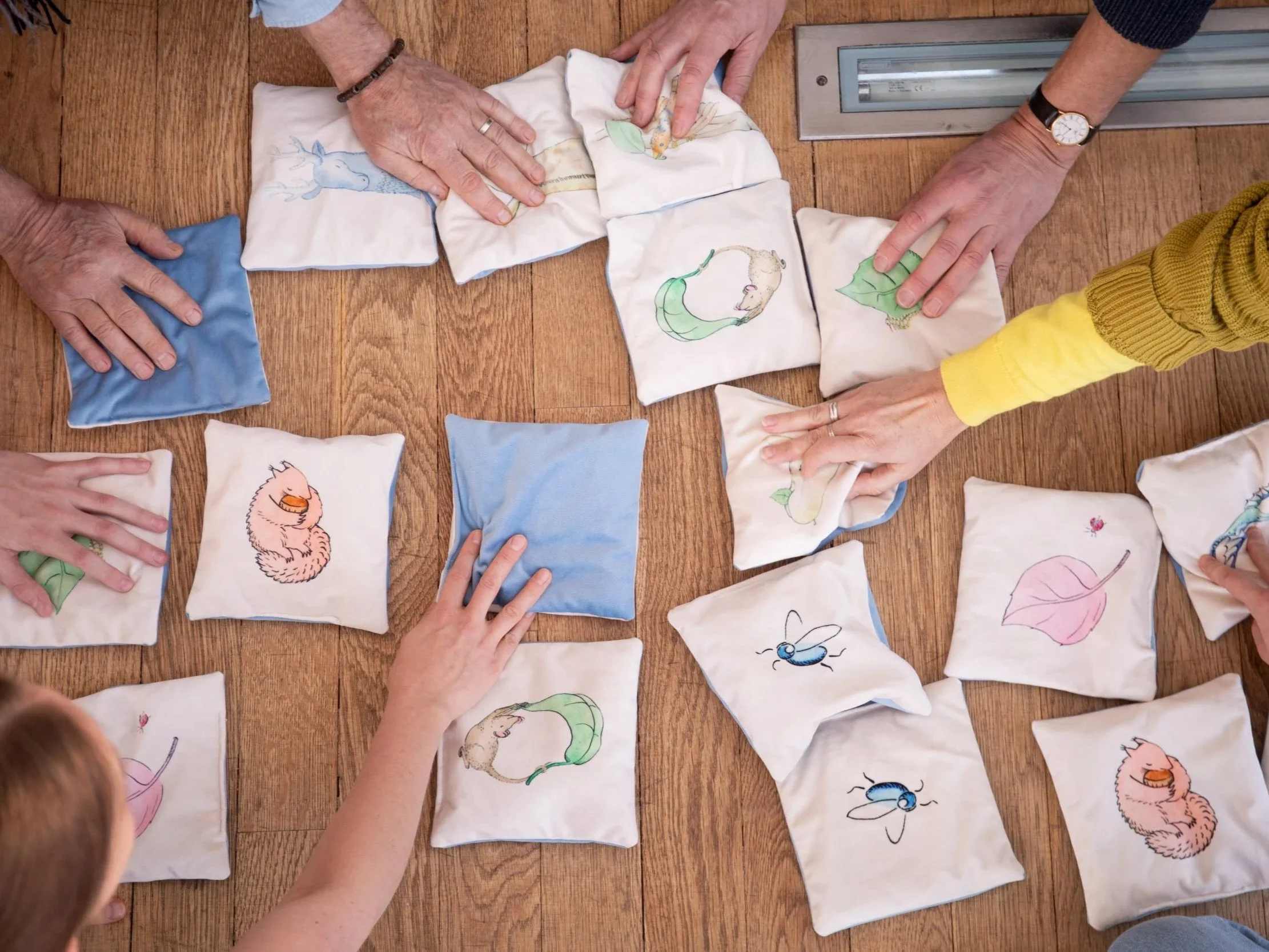POLIN: Space to Relax and Create
Sensory Art Space, POLIN Museum of the History of Polish Jews, Warsaw (2025)
Overview
Space to Relax and Create was commissioned by the POLIN Museum as part of its Accessible Culture program. Designed as an inclusive, multisensory environment, the installation invited children and adults to rest, create, and experience art together.
Set in the museum’s monumental entrance hall, the space transformed the public area into a shared zone of imagination, blending history, nature, and human connection.
Key Elements
Giant plush cat – a soft resting sculpture
Tactile illustrations – relief art for touch-based discovery
Whale pillow memory game – playful and participatory
Forest mural – watercolor and linework evoking calm and nature
Soft, organic forms and a watercolor palette of greens, blues, and neutrals created a cohesive, natural atmosphere. Textures: felt, wood, fabric - emphasized warmth and accessibility.
Impact
Now one of the museum’s most loved family zones, the project has been praised for its calm, sensory atmosphere and inclusive, aesthetic design. It continues to shape Konieczna’s artistic methodology focused on tactility, empathy, and multisensory engagement.
Ongoing Research
Space to Relax and Create forms the foundation of Julia Konieczna’s ongoing work in inclusive and sensory-based art experiences. Future iterations aim to collaborate with international museums to explore how tactile illustration and participatory design can enrich public spaces.
Ideal for:
Museums & cultural centers seeking a sensory-friendly family zone
Interactive exhibitions merging visual arts, education, and emotion
Concept
The project explored illustration as environment - art that can be touched, entered, and completed by the viewer’s presence. Inspired by the Polin legend and the natural world around Warsaw, it reflected themes of growth, empathy, and community.
Artist Julia Konieczna developed handcrafted, tactile elements that encouraged sensory exploration and creative play.
Inclusion & Experience
The installation blurred boundaries between children’s and adult spaces, fostering shared creativity, connection and empathy. Its open layout and tactile variety supported neurodiverse and visually impaired visitors.
Workshops, also designed and conducted by the artist and held in the space invited families to co-create, reinforcing art as a universal language.
From the Artist
What I value most in this project is that the space truly lives - children and adults return, make it their own, and share moments together.
I wanted to create a place that feels safe, open, and real - free from overstimulation, where every kind of sensitivity is welcome. For me, the forest has always been that kind of place: full of calm, small discoveries, and a sense of belonging. That’s the feeling I brought to the museum.
It moves me to see how naturally children combine rest and creativity - how quickly given space they invent stories, name the creatures, and build friendships. Here, art becomes a dialogue, a shared rhythm between people.
I’m deeply grateful to the POLIN Museum for their trust and openness, and for co-creating a space that truly belongs to everyone.








